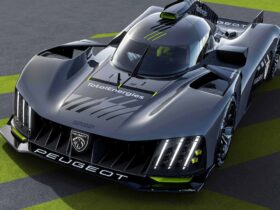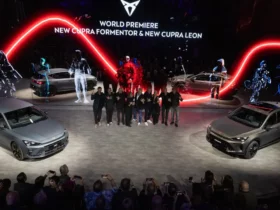Porsche consider the direct capture from the air (DAC) as a major new technology. Extracting large quantities of carbon dioxide (CO2) from the atmosphere while respecting the environment can in fact play a significant role in the fight against climate change. Together with Volkswagen Group Innovation, the eFuel specialist HIF Global and MAN Energy Solutions, the sports car manufacturer is evaluating the possibility of integrate a DAC plant within the eFuel pilot production site in Chile.
The plant could be used to extract the CO2 from the air required for the production of eFuel at the Haru Oni pilot site. At the IAA summit at the München Messe (Hall B2, stand of the Volkswagen Group), the project leaders will show how the DAC fits into Porsche’s strategy. In addition, they will explain in detail how the system works.
Porsche against climate change, the advantages of CO2 extraction
One of the main advantages of DAC technology is that it allows you to extract the CO2 wherever the renewable energy necessary for its operation is available. The technology is also scalable. The electricity for the filtration system could be generated at the Haru Oni eFuel pilot site with wind power, thus from a renewable source. The necessary heat could be provided by the eFuel plant’s hydrogen generation process.

How Direct Air Capture (DAC) technology works
To extract CO2 from the atmosphere, first of all the ambient air is purified of dirt particles large. Then it is channeled towards a sort of pebble-like filter material. The CO2 deposited there is then extracted from the material and collected in a highly concentrated form purified in special tanks to be subsequently used as raw material. The watera potential by-product, is drained.
This CO2 extracted from the atmosphere can be used in different ways as part of a circular economy. In the future, it could be used as raw material for the production of non-fossil plastics, storing CO2 for the long term. It can also be used to make fully synthetic fuels, also known as eFuel. Porsche and HIF Global are investigating whether and how CO2 extracted via DAC can be used at Haru Oni’s eFuel plant in Punta Arenas, Chile. Here CO2 is mixed with hydrogen to form methanolwhich is then processed into synthetic fuel.
So far, the CO2 required for the Haru Oni site has been derived from a biogenic source. As an alternative to producing non-fossil products (CCU, or carbon capture and use), it is possible to permanently remove CO2 from the atmosphere and store it long-term (CCS, or carbon capture and storage).
















Leave a Reply
View Comments